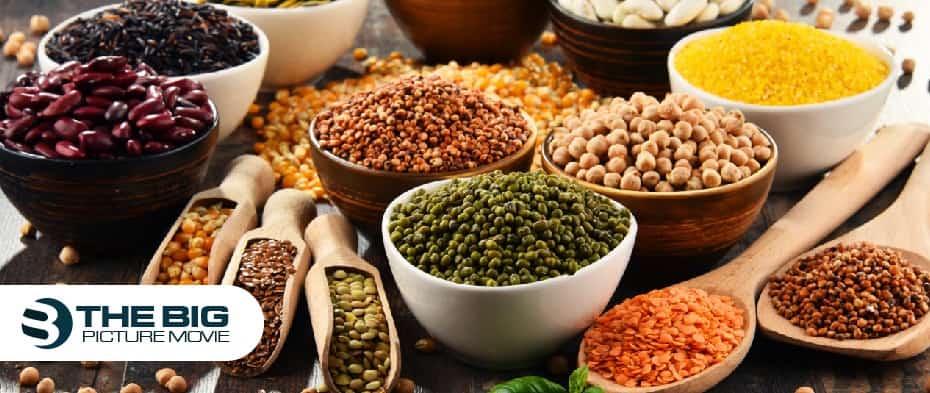
How to Eat More Vegetables On a Friendly Fudget
Everyone has questions about how to eat more vegetables on a reasonable budget. Nowadays, when I visit the market, my bill goes sky high as I buy vegetables and fruits. However, buying these vegetables is recommended, so people visit markets at specific times to get these at low prices. The research indicates that, on average, a person consumes 2000 calorie diet, which consists of 2 cups of fruit and 2½ cups of vegetables per day or 17 and a half cups of vegetables and 14 cups of fruit every week. Vegetables include dark green vegetables, red and orange vegetables, green beans and peas, and starchy vegetables.
Eat more vegetables, which makes your diet healthy and less expensive.
Making your diet healthy and a friendly budget in today’s world is quite difficult, and people can’t afford to switch their demands to less expensive things. Adding fiber, vitamins, and proteins to your diet makes it healthier. Eat more vegetables and fruits as they are a vital source of rich proteins and vitamins.
Purchase vegetables in Season
When they are in Season, Vegetables will cost significantly less than when they are not. When there are a lot of new products, prices go down.
Food is also less expensive during the Season because it grows in less expensive conditions, so easily available at reasonable prices. Asparagus is in Season in Britain right now, a bunch of asparagus, and it is typically one of the most expensive vegetables, which costs £1.49 at Waitrose.
Seasons change slightly yearly because of the weather, but a seasonal vegetable calendar can give a rough idea about the vegetables. Make a list of the prices of the things you usually buy so you can see when they are cheaper and this way you can eat more vegetables.
Search out your local markets
The local market was selling a large bowl of cherry tomatoes for £1 when observed, which would be three times the price in most supermarkets. Many local markets sell their vegetables by the bowl, and people can frequently get a much higher quantity of ingredients for a much lower price than they are charging in the supermarkets.
Planning is everything when you’re on a tight budget. Grocery bills will drop if you write exactly what you’ll be making for the week and stick to a shopping list. If everything people buy has a specific purpose, there will be much less waste.
Schedule and Keep track of your food
Track how many vegetables you consume daily if you plan meals. If someone wants to see how much is in your weekly meal and add more if necessary, a great tip is to have separate highlighters for vegetables and to mark out any meals that contain a portion.
Preparation is also crucial. If you like to snack a lot, make vegetables more appealing to grab and go by preparing them at the beginning of the week, so they are ready to eat out of the fridge. Wash, chop and prepare raw vegetables so you can begin eating immediately. Stock up on guacamole and other dips made with beans to make them even more appealing.
Find cheap sources of Vegetables
People can count canned soups, baked beans, and even cheap spaghetti hoops toward their daily vegetable intake. We have to add that we do not recommend getting all of your portions this way. Use the fresh stuff; however, tinned varieties are creative to be added to the meals. Eat more vegetables and add all the vegetables to your diet.
Make sure you add pulses to your diet

Although they don’t appear to be a vegetable, they contain many of the same nutrients as fruits and vegetables, albeit on a smaller scale. However, only one serving of pulses counts toward your daily five.
Beans, chickpeas, and lentils are all inexpensive when purchased in large quantities. They can be added to salads, soups, and curry to make them more nutritious and filling. Make a mixed bean salad, spiced lentil and kale soup, or chickpea burgers.
Beans and peas are used to make sandwiches. Caroline adds, “A layer of hummus instead of butter is also a brilliant way to add more plants while adding flavor and being healthier.” “Likewise, add a salad. However – a handful of spinach for more iron, pick gherkins over cucumber for tang and add natively constructed slaw for heaps of crunch.
Understand your portion sizes
We don’t think you can ever have too many vegetables, but if you’re trying to cut costs and always run out, pay attention to portion sizes. Knowing the right amount to get the nutrients you need will make your food last much longer.
Don’t forget the frozen
We’re thoroughly prepared to accept that new is ideal, yet frozen foods grown from the ground are frozen at source and subsequently hold every one of the supplements that you’d track down in new products of the soil. Like most frozen foods, they are much less expensive, last much longer, and help reduce food waste. The most widely used frozen vegetables are sweetcorn and peas. They bulk up pasta sauce dishes, casseroles, and pies.
Frozen vegetables are already chopped, so people can use them to make quick meals. According to food blogger Caroline, “You can also use the correct quantity, such as defrosting a handful of sweetcorn to add to tuna mayo.”
Avoid multipacks
Vegetables are frequently packaged together in supermarkets for convenience’s sake, not to save money. This practice increases costs and contributes to plastic waste.
A whole iceberg lettuce costs 53p at Tesco, while a 220g bag costs 79p. In contrast, a netted bag of three loose brown onions costs £2.34 per kilogram, a significant increase. Therefore, picking up loose items and placing them directly in the trolley will save money and the environment.
Replace meat with vegetables
Even though meat is significantly more expensive than vegetables, many continue to include it in almost every meal. Your vegetable intake will increase while the cost of your meals will decrease if you replace meat with vegetables.

Designate a few days a week to eat plant-based because it can easily get stuck in making the same meals. It is a great way to try new foods and flavors, whether a new dish or a variation on the one you already make, for instance, making a veggie chili instead of a meat one.
Butternut squash, yam, aubergines, courgettes, and mushrooms are filling enough all alone when they’re the star of the dinner. Sweet potatoes are a great source of complex carbohydrates to fuel the body and make them ideal for picky eaters.
Add more vegetables and less meat if you can’t live without meat. Add veg to meat dishes, and make the most costly component of the dish go further. If your children don’t like vegetables, add grated carrots and courgettes to mince dishes and more root vegetables to stews. The dish will have a higher nutritional value and more flavor by finely chopping vegetables like spaghetti squash, mushrooms, and peppers. Additionally, Caroline suggests substituting beans and lentils for some of the meat.
Know what to do with them
Although it may seem obvious, you’ll be much more likely to use your vegetables if you know a lot of different ways to prepare them. Increase intake by cooking broccoli into a curry, pasta, or frittata. Cook vegetables as they make your diet healthy.
Make a budget-friendly cauliflower rice curry, or try a vegetable curry if you enjoy making delicious Indian meals on weekends.
You can also be creative by putting new spins on traditional recipes. Even make sweet potato waffles or butternut squash pancakes that include vegetables for breakfast.
A daily healthy routine

A healthy routine makes life healthier. People become more active when they eat healthy food, and their brain works faster, which shows that their diet is rich in proteins and vitamins. Here’s the guide to setting your routine most effectively:
1. Start your day with a breakfast
It’s worth starting as you intend to finish if you want to squeeze more into your day. Vegetables and savory breakfasts include grilled tomatoes, mushrooms, or beans which strengthen muscles and bones.
2. Make a healthy lunch
Making healthy lunches can save time and money if they are packed. And they are typically healthier and more healthy than store-bought sandwiches. There are numerous ways to add additional vegetables to salads, and soups can be excellent sources of beans and pulses.
3. Pre-Planned Dinners
Planning, make sure that your dinners are full of healthy vegetables. Make an effort to set aside some time on the weekend to select some recipes. After that, make a shopping list to know precisely what you will require and when. Choose canned or frozen foods for later in the week. Or check the use-by dates on fresh produce as they are healthier.
Conclusion:
Vegetables add fiber, minerals, vitamins, and proteins to your diet and make you a stronger person. Using eggs, beans, and other vegetables helps a person live a healthy life. And buying such vegetables on a friendly budget is difficult. We’ve got you covered here, mentioning all the vegetables through which you never get sick eating them—people who are sick or have any disease eat more vegetables and fruits.
Vegetables are the star of a few dishes, and adding them to your menu is beneficial. Add vegetables to your regular diet.



